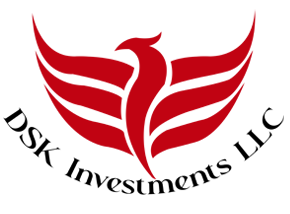Introduction:
Every investor is unique, and so should be their investment strategy. This article delves into the benefits of personalized investment plans and how DSK Investments can tailor portfolios to fit individual goals, risk tolerance, and market conditions.
Key Topics:
- Why one-size-fits-all strategies fall short
- The process of creating a customized portfolio
- Case studies: real clients who benefited from personalized plans
- How our team stays adaptive to your changing needs
In today’s dynamic financial environment, a one-size-fits-all investment strategy no longer works. Each investor has unique goals, financial circumstances, and risk tolerance. As a result, personalized or customized investment strategies have become a powerful approach for wealth creation and preservation.
In this article, we’ll explore how customized investment strategies can help maximize your wealth, offer superior risk management, and adapt to your evolving financial needs.
1. Tailoring to Your Financial Goals
Overview:
A customized investment strategy begins with an in-depth understanding of your specific financial goals. Whether you’re saving for retirement, funding a child’s education, purchasing a home, or building long-term wealth, a personalized plan ensures that every investment decision is designed to help you meet your objectives.
Why It Matters:
Financial goals vary widely between individuals, and a strategy designed for general market conditions might not align with your personal timeline or ambitions. Customizing your strategy ensures that your investment choices are directly aligned with your short-term, medium-term, and long-term goals.
Actionable Steps:
- Define Clear Objectives: Begin by identifying and prioritizing your goals. Are you seeking capital appreciation, regular income, or wealth preservation?
- Create a Targeted Strategy: For example, if you’re nearing retirement, your strategy may focus more on income-generating assets like dividend stocks or bonds. If you’re younger, a growth-oriented portfolio with a focus on equities may be more appropriate.
Example:
An investor saving for retirement in 20 years may focus on a growth portfolio with a higher allocation to equities. Meanwhile, an investor approaching retirement might prioritize capital preservation and income, favoring bonds and dividend-paying stocks.
2. Personalized Asset Allocation for Optimal Performance
Overview:
One of the key benefits of customized strategies is personalized asset allocation. Asset allocation refers to how your investments are distributed across different asset classes, such as stocks, bonds, real estate, and alternative investments. The right mix can significantly impact your portfolio’s performance and risk profile.
Why It Matters:
Each investor’s risk tolerance, investment horizon, and financial goals are unique. A customized asset allocation strategy ensures your portfolio is tailored to your comfort with risk while maximizing potential returns.
Actionable Steps:
- Risk Assessment: Work with your financial advisor to assess your risk tolerance. This will guide the proportion of your portfolio allocated to higher-risk assets (like equities) versus lower-risk assets (like bonds).
- Diversify Across Asset Classes: A balanced mix of asset classes reduces your portfolio’s exposure to market volatility while capturing growth opportunities. A higher proportion of equities may be suitable for aggressive investors, while a more conservative investor may favor bonds and real estate.
- Rebalance Regularly: Regularly rebalancing your portfolio ensures it stays aligned with your target asset allocation. This helps maintain your risk/return balance as market conditions change.
Example:
A younger, risk-tolerant investor may have a portfolio allocation of 70% equities, 20% bonds, and 10% alternative investments like private equity. A conservative investor, however, may allocate 40% to bonds, 40% to equities, and 20% to real estate for a steadier income stream.
3. Adaptive Strategies for Changing Markets
Overview:
Market conditions are always changing, driven by factors such as interest rate fluctuations, geopolitical events, and economic cycles. A customized investment strategy allows you to adjust your portfolio in response to these shifts, ensuring your investments remain resilient through various market environments.
Why It Matters:
A static investment plan can leave your portfolio exposed to unnecessary risks or missed opportunities. By incorporating an adaptive approach, you can capitalize on market trends and protect your wealth from downturns.
Actionable Steps:
- Stay Informed: Regularly review market trends and economic indicators to identify potential opportunities or risks.
- Flexible Allocation: Allow room for flexibility in your asset allocation to take advantage of market shifts. For example, increasing your allocation to defensive sectors like utilities during times of volatility can help protect your portfolio.
- Hedge Against Risks: Incorporate risk management tools such as options or stop-loss orders to limit potential losses during periods of market uncertainty.
Example:
In a rising interest rate environment, an investor might reduce exposure to interest-sensitive sectors such as utilities and increase investments in sectors that benefit from inflation, such as energy or commodities.
4. Enhanced Risk Management
Overview:
Customized strategies take into account not just your goals but also your unique risk tolerance. By adjusting for the level of risk you are comfortable with, personalized portfolios provide peace of mind while still offering growth opportunities.
Why It Matters:
Risk tolerance varies from one investor to another. Some may be willing to accept short-term volatility for the promise of higher returns, while others prioritize stability and capital preservation. Customized strategies help manage this balance effectively.
Actionable Steps:
- Set Your Risk Parameters: Clearly define the level of risk you’re willing to take. Are you comfortable with the possibility of losing 10% of your portfolio in a downturn, or do you prefer more conservative investments?
- Implement Risk Controls: Include a mix of asset classes that reduce overall portfolio risk. For example, holding a mix of bonds and equities can lower risk compared to holding equities alone.
- Continuous Monitoring: Regularly track your portfolio’s performance against your risk tolerance. Adjust your strategy as needed to ensure your risk exposure remains within acceptable limits.
Example:
A high-net-worth individual seeking capital preservation may prioritize lower-risk investments like government bonds, while a younger investor with a longer time horizon might allocate more toward growth stocks and higher-risk sectors.
5. Tax Efficiency and Wealth Optimization
Overview:
A crucial element of maximizing wealth is optimizing your portfolio for tax efficiency. A personalized strategy will consider your unique tax situation, helping you minimize tax liabilities and keep more of your returns.
Why It Matters:
Tax-efficient strategies can have a significant impact on your long-term wealth. Without proper planning, taxes can erode a significant portion of your investment gains, especially when dealing with capital gains or retirement income.
Actionable Steps:
- Utilize Tax-Advantaged Accounts: Maximize contributions to tax-advantaged accounts such as IRAs, 401(k)s, or other retirement accounts where investments can grow tax-free or tax-deferred.
- Tax-Loss Harvesting: Strategically sell underperforming assets to offset capital gains taxes, reducing your overall tax burden while staying invested in the market.
- Proper Asset Location: Place tax-efficient investments like stocks in taxable accounts, while placing bonds or REITs (which generate income taxed at higher rates) in tax-deferred accounts.
Example:
An investor in a high tax bracket might focus on holding municipal bonds, which are exempt from federal taxes, in their taxable account, while keeping higher-yield, taxable investments in their retirement accounts.
6. Continuous Portfolio Optimization
Overview:
One of the key advantages of customized investment strategies is ongoing optimization. A personalized plan isn’t static—it evolves alongside your financial situation, goals, and market conditions. Continuous monitoring and adjustment help maximize returns while minimizing risk.
Why It Matters:
Life events such as marriage, the birth of a child, or nearing retirement can change your financial goals and risk tolerance. A customized strategy allows you to adjust your portfolio as your circumstances change, ensuring that your investments remain aligned with your objectives.
Actionable Steps:
- Regular Reviews: Meet with your financial advisor regularly to review your portfolio’s performance and ensure it’s aligned with your evolving financial needs.
- Dynamic Adjustments: Adjust asset allocation, risk tolerance, and investment goals as your personal or financial situation changes.
- Long-Term Planning: Incorporate long-term financial planning to anticipate future needs, such as funding education, retirement, or estate planning.
Example:
A professional in their 30s with aggressive growth goals may start with a portfolio heavily weighted in stocks. As they move closer to retirement, their advisor may shift the focus toward more conservative, income-generating investments like bonds and REITs.
Conclusion
Customized investment strategies offer a powerful way to maximize your wealth by aligning your portfolio with your unique financial goals, risk tolerance, and market outlook. Whether you’re saving for retirement, protecting your wealth, or seeking capital growth, a personalized approach helps ensure that every aspect of your financial plan works toward your long-term success. By continuously optimizing your strategy, staying adaptive to market changes, and managing risks effectively, you can unlock the full potential of your investments while achieving peace of mind.
A custom strategy is not just about maximizing returns—it’s about building a wealth plan that grows with you, supports your life goals, and withstands the test of time.











